
 |
|
|
Fruits
Volume 63 Number 7 Date 06/14/2018 SAN JOSE SCALE - Monitoring for crawlers by taping scaffold branches should be underway. Concentrating the tape on younger limbs (2-3 inches in diameter) in blocks with a history of SJS damage is advised. A 10x hand lens is required to view the oval, bright-yellow crawlers. According to Orchard IPM Specialist John Aue, a capture of 10-15 crawlers in a few days or 10 crawlers on one tape with zero on all other tapes, may warrant application. ROSE CHAFER - This generalist pest is appearing in higher numbers and may rapidly arrive in vineyards and orchards, where the beetles skeletonize leaves and consume developing fruit clusters. Scouting twice weekly is advised for vineyards on sandy soils and those with a history of rose chafer problems once the first beetle is observed. An average of two beetles per vine has been suggested as the basis for initiating controls. Systemic soil drench insecticides are not effective at this time. Commercially available traps can attract more beetles from surrounding areas and are not recommended for use in vineyards. APPLE MAGGOT - Emergence of flies from the soil is likely to begin in the next two weeks. This annual event corresponds with the accumulation of 900 degree days (modified base 50°F) when soil moisture is appropriate. Apple maggot traps should be placed soon in perimeter trees adjacent to abandoned orchards or woodlots to capture the earliest flies. OBLIQUEBANDED LEAFROLLER - Larvae resulting from the first moth flight are emerging across the southern half of the state. The small, newly-hatched caterpillars are controlled by most products applied for codling moth (except granulosis virus and mating disruption), but scouting is still required to determine if codling moth sprays have effectively reduced OBLR populations or if additional measures are needed to prevent fruit damage. Sampling for fruit and foliar feeding should begin seven days after the first moths are captured in pheromone traps. SPOTTED WING DROSOPHILA - The UW reports the first SWD flies were captured in traps on June 1 in Dane County. This date compares to June 5 in 2017, and June 10 in 2016, and suggests that SWD are appearing earlier each year. Berry growers should intensify monitoring and scouting efforts at this time, and prepare to implement SWD treatment programs. Commercial SWD traps and lures are now available through Great Lakes IPM or growers can make their own traps using a clear plastic deli container baited with either a yeast-sugar mix (one tablespoon of active dry yeast plus four tablespoons of sugar dissolved in 12 ounces of water) or apple cider vinegar. A few drops of unscented dish soap should be added to the homemade traps to break the surface tension and kill the flies. LESSER PEACHTREE BORER - Increasing counts in pheromone traps indicate the first of two flights should soon peak. Control of LPTB in orchards is based on preventing larval establishment underneath the bark and should be timed to coincide with egg hatch. Once the larvae are under the bark, chemical control is ineffective. LPTB egg hatch begins about 8-10 days after moth emergence, thus the optimal treatment window is 7-14 days after the first moths are captured in pheromone traps. Directed sprays must be applied uniformly to drench the trunk and scaffold limbs to a height of about eight feet. Orchards that record high LPTB trap counts are advised to begin checking for signs of infestation, such as presence of pupal skins, sawdust, and frass produced by feeding borers, in the gum of cankered areas. If the gum does not contain frass or sawdust, the injury is probably not caused by borers. LPTB problems are almost always associated with Cytospora canker and, to a lesser extent, pruning wounds, winter injury, and mechanical damage. A second and more damaging flight occurs in late August or September. REDBANDED LEAFROLLER - Moth counts will begin to increase again by July as the second flight starts. Minimal RBLR activity was noted again this week, with average counts varying from 0-27 moths per trap and averaging only three per trap. -- Krista Hamilton, DATCP Entomologist 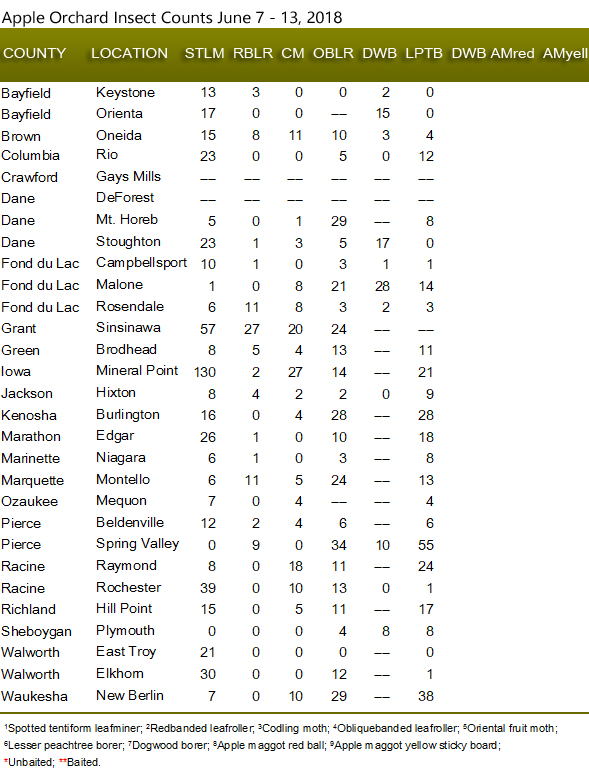
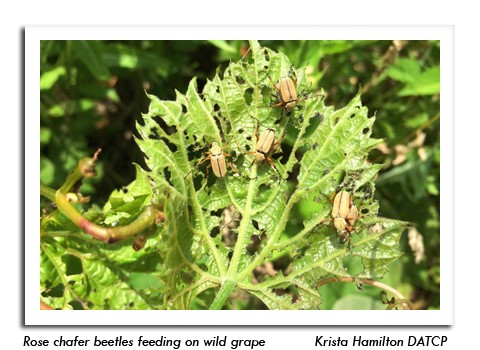
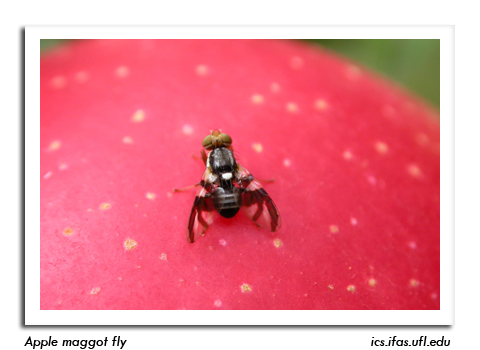
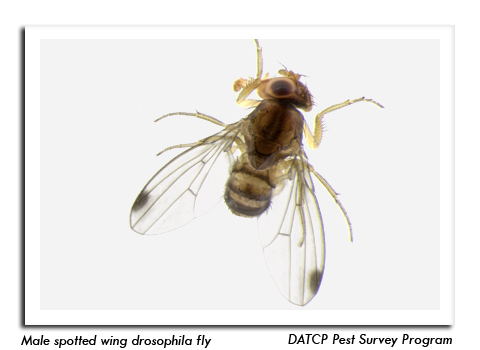
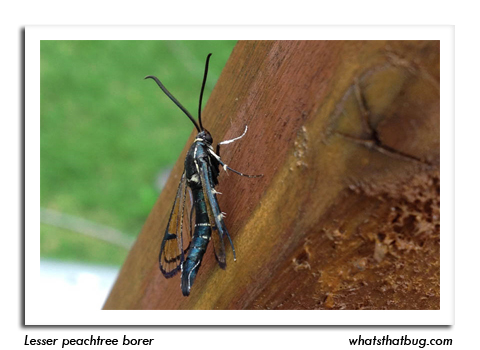
|
|
|